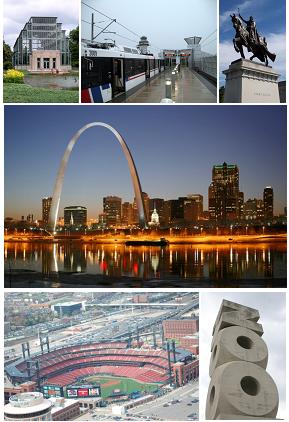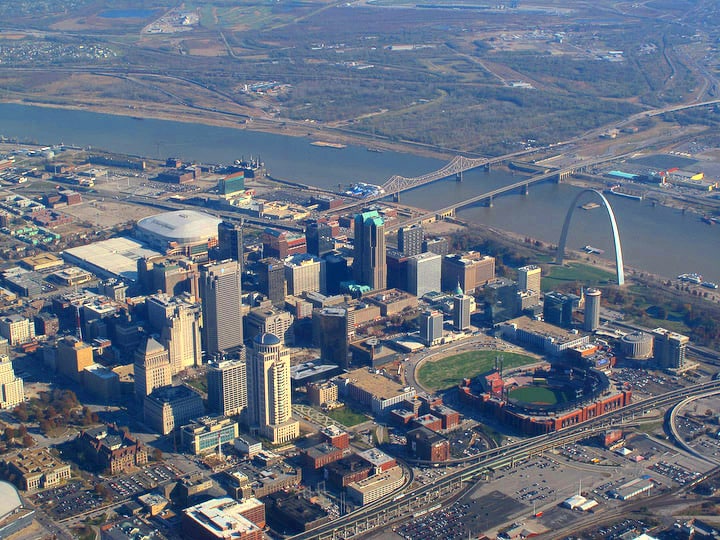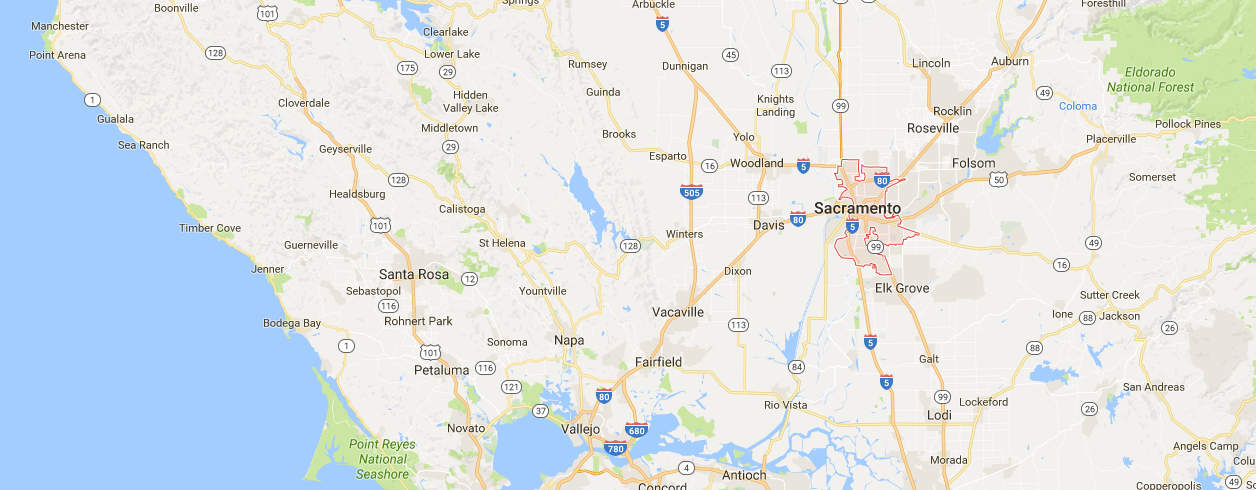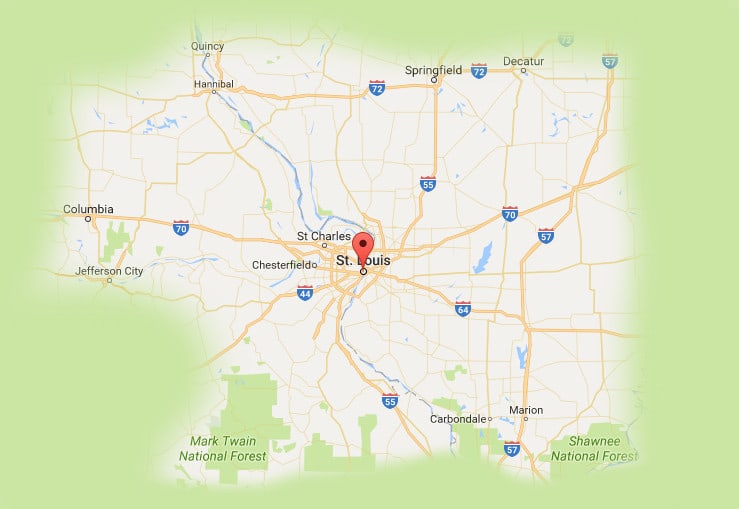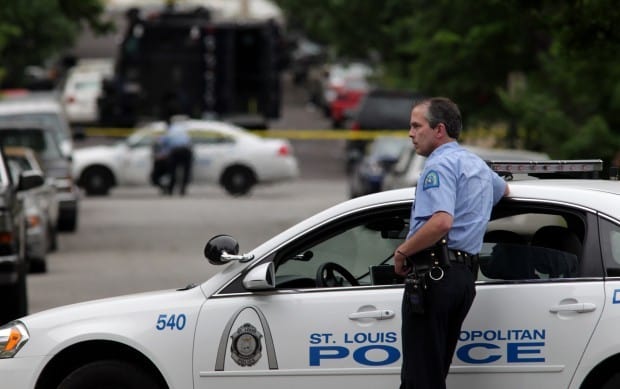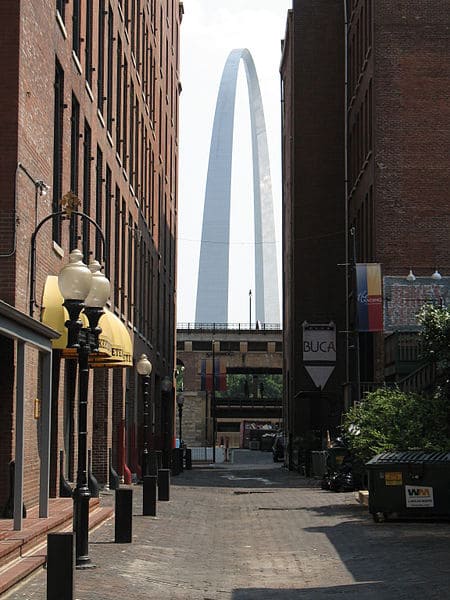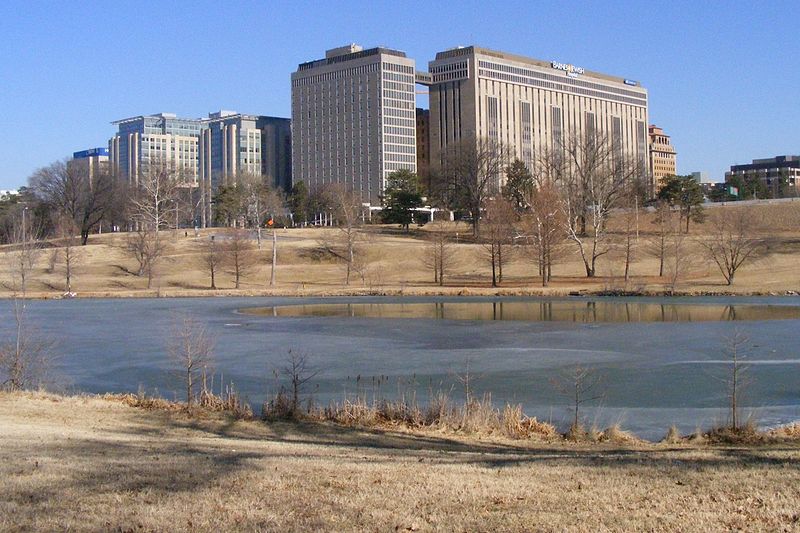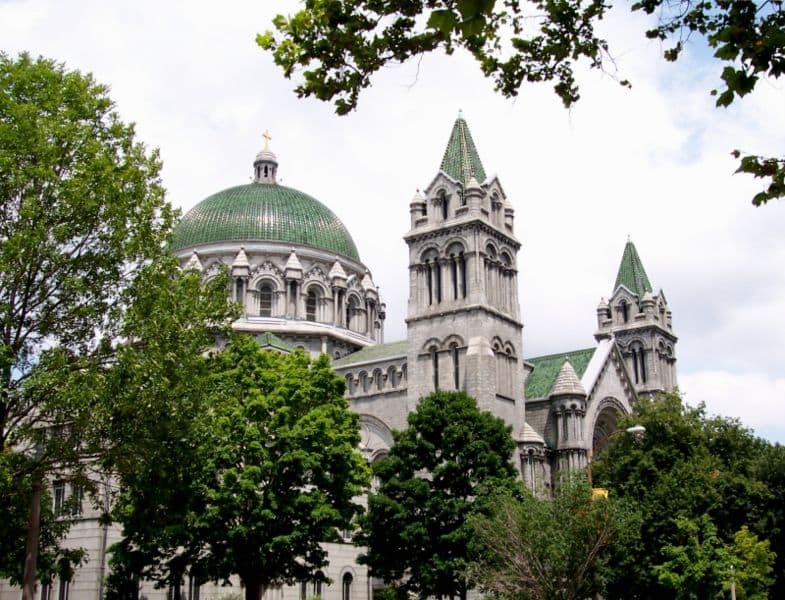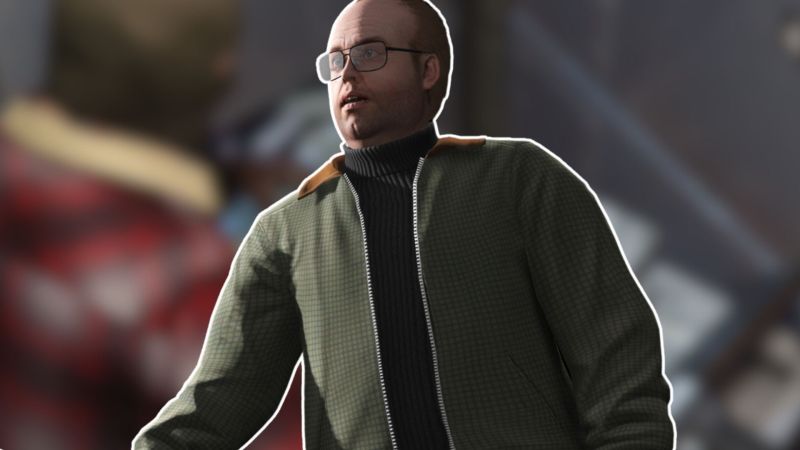GTA 6 City Of The Week: St.Louis
GTA 6 City of the Week is a weekly article series here on GTA BOOM. Every week, we will evaluate a different city in the United States, gauging how well it would fit GTA 6 as a setting. First though, a recap of the week's GTA V news...
Those of you familiar with the reputation of St. Louis might have wondered why we didn't cover this city in the past. In all honesty, initially I was shooting for coastal cities, though I had St. Louis in mind. Then, after a while the articles drifted in-land while St. Louis drifted out-of-memory. In any case, a helpful commenter (who also happens to be from St. Louis) on last week's Charlotte post pointed out that the city just got rated as the most dangerous in America yet again, so what better opportunity to make up for its absence than now?
St. Louis
In spite of its current state as a relatively small city on a national scale with not exactly the best reputation in terms of public safety, St. Louis has a history to be proud of. At one point the city was the fourth largest in the country and became a major economic hub due to its busy inland port, facilitated by the Mississippi. St. Louis even hosted the 1904 Summer Olympics, which was notable for the fact that out of 651 participating athletes, only 62 were foreigners due to the difficulty of accessing the city, as well as the international tension caused by the Russo-Japanese war.
St. Louis today dropped down to being the 60th largest city in the USA with a population of barely over 300,000. That said, it is the second largest city in the state of Missouri, and the surrounding metropolitan area is home to around 3 million souls. Taking a look at the map, we'll see a large urban sprawl growing out of St. Louis itself, making it look like most much larger cities, however from an administrational point of view, the city proper actually forms a relatively small chunk of the sprawl in its middle.
The city is independent, meaning it isn't part of any state or county within the USA. I imagine this is one of the main reasons why it hasn't been unified with the large surrounding sprawl — in fact, here's a question for US based readers who know about such things: Several cities we've examined have large areas around them of contiguous settlement, but cut up into different cities or towns from an administrational point of view. In some cases, we've seen a town physically inside another, being bordered on all sides by the same settlement.
In such cases, why aren't the settlements unified? Is there some kind of legal issue preventing this? In Hungary it is relatively common practice to turn small settlements into districts of larger cities which have "consumed" them through growth, and this has happened on several occasions with the Capital, Budapest. Many of the outer districts were once independent towns, but were added to the jurisdiction of the capital for convenience and for the sake of administrational optimization.
Getting back on track, St. Louis has been leading the charge in terms of urban renewal, as many of the inner city areas have suffered from degradation. The downtown area as well a several residential complexes have been getting the most attention in an attempt to revitalize the city. St. Louis' small geographical size has been attributed to the choice of becoming independent, which significantly lowered city-income from taxes.
St. Louis was once a favored destination by immigrants, especially Bosnians, which has led to the city developing the largest population (around 70,000) of Bosnians outside of their home country. Bosnian-Americans are generally considered to have integrated very well into American society, and are seldom victims of discrimination due to this fact.
The St. Louis economy has changed much over the course of history. Once a major industrial city, St. Louis depended upon its port. The Mississippi river allowed for large shipments to arrive, resulting in a booming manufacturing industry which fed off the port. More recently, however, the city's industry has reorganised itself to be more service oriented, and is one of the fastest growing hubs of biomedical and pharmaceutical research.
From a geographical standpoint, St.Louis isn't exactly ideal. As an inland city, turning it into an island for the sake of GTA 6 would be a bit of a stretch, and there are no large bodies of water around either. Sure, the Mississippi flows through it, but there is quite a large difference between a river and an ocean.
That said, there are some other notable settlements nearby, like Columbia and Springfield, as well as some natural landmarks like various national forests which could be implemented. While it would also be a stretch to use a dense forest as a natural border around the map instead of water, it would make boats and such completely pointless, as one river is hardly space enough to use them.
Overall, the city's chances are hurt by the geographical factors as a GTA map. Now, if GTA were a sci-fi franchise, they could just do what Defiance did and cite the effects of alien starships crashing on Earth as a cause to completely repurpose the climate and geography around the city to their heart's desire (in the TV show. The game is set around San Francisco), but alas, GTA is rooted in realism.
Crime
And here we come to the "main attraction". St. Louis has gained a reputation — even internationally — as one of the most dangerous cities in the United States, if not the most dangerous one. In any case, it certainly lives up to said reputation, having been placed at rank #1 on the FBI's list of top 25 most dangerous cities in the USA.
St. Louis has a murder rate of 59 and violent crime rate of 1817 per 100,000 residents, which are the highest rates of both categories in the entire country. There were 188 homicides in 2015 and 5762 violent criminal acts. Now that sure as hell fits the GTA profile, don't you think?
And all of this comes after a 7.7% rise in overall crime throughout the city, which does not bode well for the 2016 statistics. In this sense, St. Louis has the best score in terms of crime throughout our main US based City of the Week article series, and this is unlikely to change in the near future unless some city gets a sudden unprecedented crime-wave.
Recognition
Now, this has us scratching our heads a tad, as St. Louis falls into that odd category where it has one landmark which has become iconic on an international scale, but nothing else could easily identify it. We are of course talking about the Gateway Arch, the most readily recognizable symbol of the city.
The monument is not only the tallest arch in the world, but the tallest accessible building in all of missouri. The Arch acts as a monument to the westward expansion of the American people throughout the history of the nation, due to St. Louis' key role in the effort.
Other than this, not much in St. Louis would help instantly identify the city. That said, some notable buildings include The Cathedral Basilica of Saint Louis, the Apotheosis of St. Louis and the Barnes-Jewish Hospital.
Story Potential
St. Louis has some pretty high gang activity, as well as other forms of organised crime. This city's crime rate offers a perfect instance of a blank slate setting. The main character could be anyone, either starting out as a criminal at the start of the story already, or being dragged into a life of crime unwittingly. Maybe it could be a vigilante trying to rid the city of rampant crime, who instead becomes embroiled in it — or, in the case of a multi-protagonist approach, all three of these examples could be represented.
Final Verdict
Pros: Extra high crime rate, Gateway Arch is recognizable, good blank slate story potential
Cons: Poor geography, un-iconic sans Arch
Overall, St. Louis would be great material for a GTA map, however a few shortcomings keep it from hitting the A's. Who would have thought that the most dangerous city in the USA isn't the best setting for GTA? If only it were a coastal city with a more memorable skyline, it would be absolutely perfect.
Which city would you like us to examine next week?





